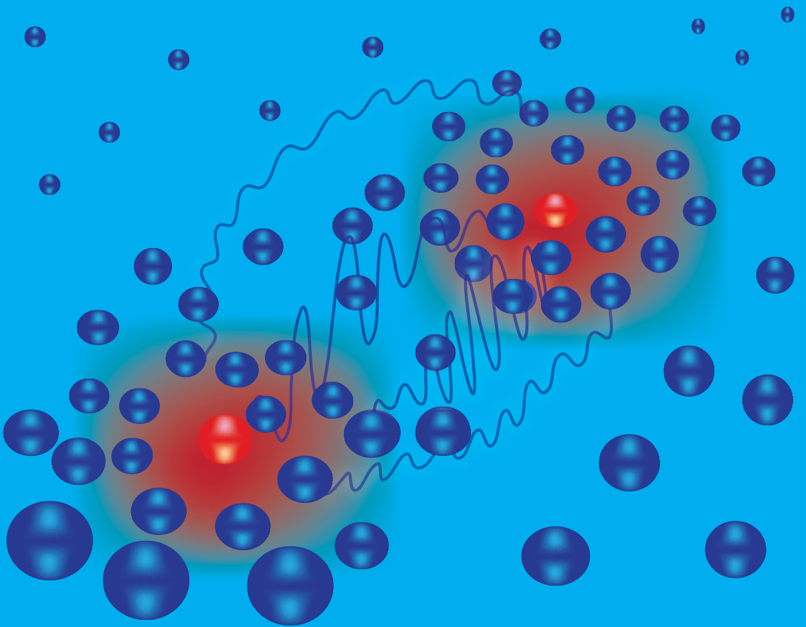Landau’s Effective Interaction in a Bose-Einstein Condensate
New paper in Phys. Rev. X by A. Camacho-Guardian and G.?M. Bruun from IFA

A fundamental problem is to understand quantum systems consisting of a large number of interacting particles. Due to the intricate laws of quantum mechanics, an accurate description from first principles is most often prohibitively complex.
Here Landau’s theory of quasiparticles comes to the rescue. It describes complicated quantum systems in terms of interacting composite objects coined quasiparticles. This theory represents one of the highlights in modern physics, and it is extensively used across many fields including quantum fluids, metals, semiconductors, superconductors and high-energy elementary particles.
Unfortunately, it has remained difficult to investigate Landau’s theory in detail using conventional systems. In a new paper published in Physical Review X, A. Camacho-Guardian and G.?M. Bruun from IFA, show that an atomic Bose-Einstein condensate (BEC) can be used to probe Landau’s theory and in particular the effective interaction between quasiparticles, systematically and in novel exotic regimes. The authors use quantum field theory to predict how surprising effects of Landau’s theory coming from strong effective interactions can be observed in BECs using present day experimental technology.
The results represent an important contribution to the vibrant field of using cold atoms as custom-made quantum simulators to solve fundamental many-body problems.
